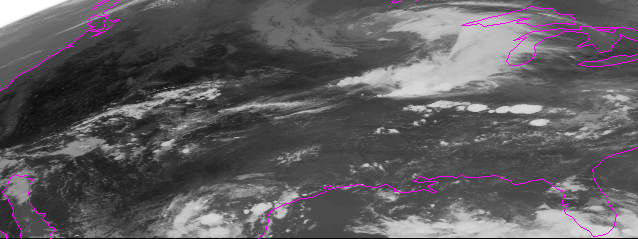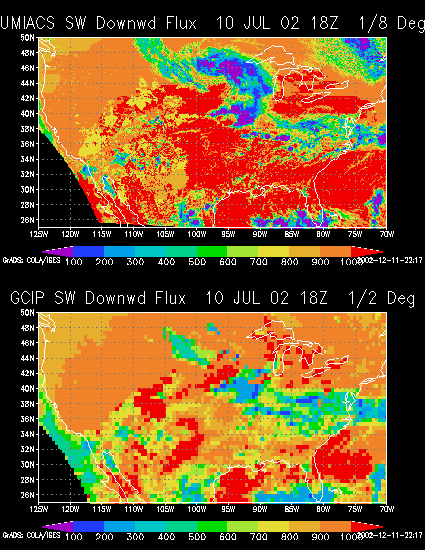Evaluation of a new 4-channel cloud screening algorithm for GOES-8
A new cloud screening algorithm based on multi-channel observations made with the GOES imager has been developed at the University of Maryland, Surface Radiation Budget (SRB) Group. The primary objective is to improve cloud detection over snow and detection of thin and sub-pixel clouds. Several versions of the algorithm are currently operational. Version 3.0 is a simplified version that requires prior knowledge of snow cover and does not have a dynamic background brightness update. Version 5.0 is a Coupled Cloud and Snow Detection Algorithm (CCSDA) that allows for simultaneous detection of clouds and snow. It has a dynamic background brightness update and hourly update in snow cover.
Version 5.0 will be implemented in a reprocessing project of the GCIP/GAPP five-year period of observations during 1996-2000. A preliminary comparison was conducted between the radiation fields as obtained with Version 3.0 cloud screening, implemented at a resolution of 1/8 degree, and the NOAA/NESDIS operational version implemented at 0.5 degree resolution. The results from July 10, 2002 at 18Z are shown below. It is evident that Version 3.0 was able to detect the large cloud system west of the Great Lakes.
Top: Surface downward shortwave flux (W/m**2) with inputs from Version 3.0 cloud screening.
Middle: Surface downward shortwave flux (W/m**2) with inputs from NOAA/NESDIS cloud screening.
Bottom: Actual GOES-8 satellite image for the same time.

GOES-8 10 July 2002 18Z
|

